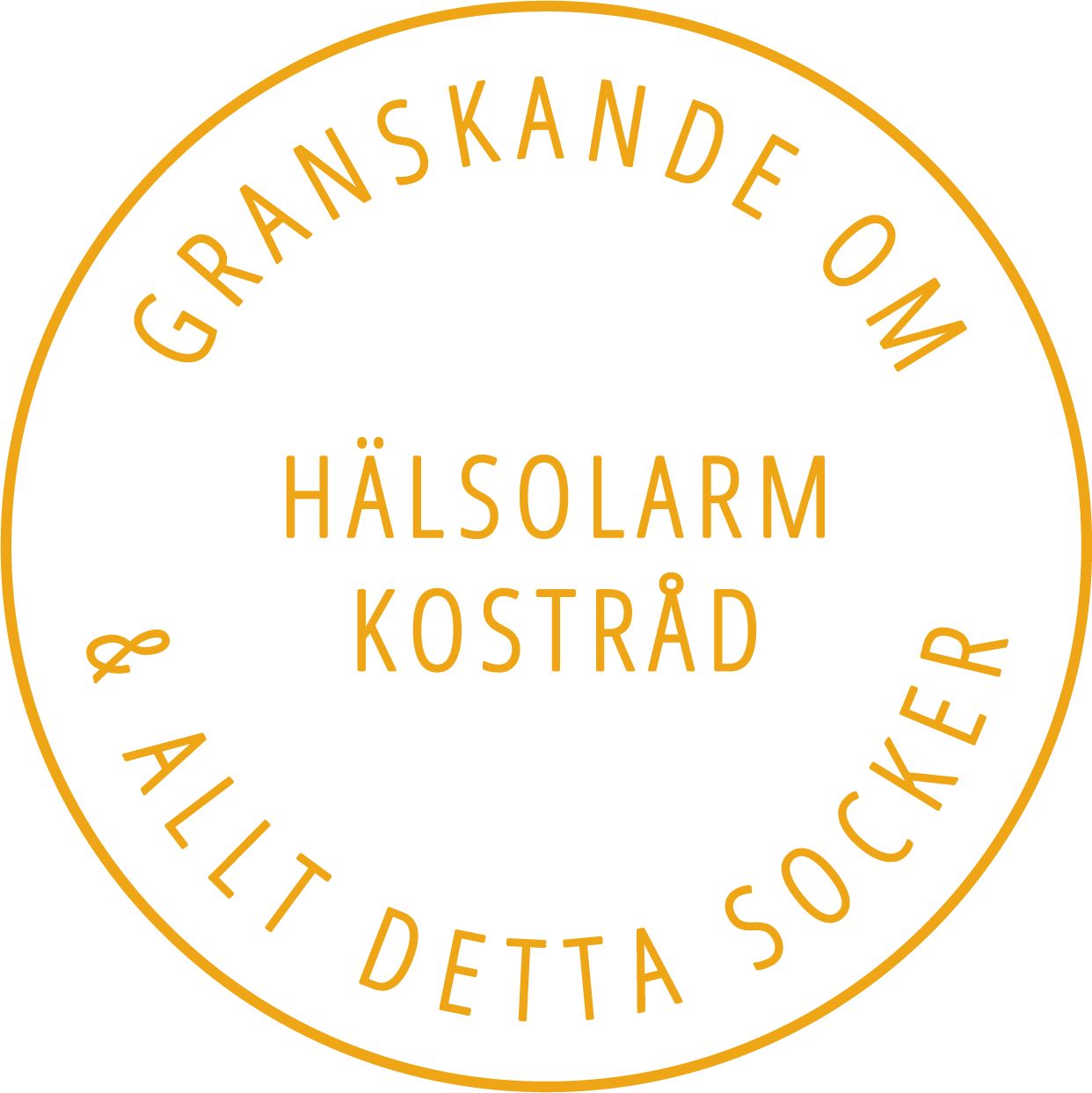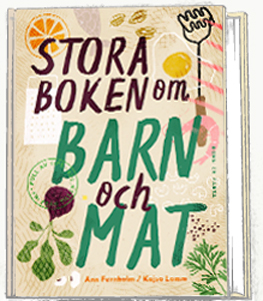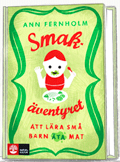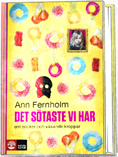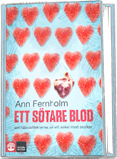Referenser till Fejkmaten
Här är referenser till boken Fejkmaten: så blir vi vilseledda. Utöver de referenser som nämns nedan har jag använt ett antal källor på internet. Har du frågor är det bara att du hör av dig!

Nyckeln till hälsa: naturlig mat
Gardner, C. D. et al. Effect of Low-Fat vs Low-Carbohydrate Diet on 12-Month Weight Loss in Overweight Adults and the Association With Genotype Pattern or Insulin Secretion: The DIETFITS Randomized Clinical Trial. JAMA : the journal of the American Medical Association 319, 667-679, doi:10.1001/jama.2018.0245 (2018).
Hall, K. D. et al. Ultra-Processed Diets Cause Excess Calorie Intake and Weight Gain: An Inpatient Randomized Controlled Trial of Ad Libitum Food Intake. Cell metabolism 30, 67-77.e63, doi:10.1016/j.cmet.2019.05.008 (2019).
Från ax till korv och godis
Shewry, P. R., Halford, N. G., Belton, P. S., & Tatham, A. S. (2002). The structure and properties of gluten: an elastic protein from wheat grain. Philos Trans R Soc Lond B Biol Sci, 357(1418), 133-142. doi:10.1098/rstb.2001.1024
Shewry, P. R., Hassall, K. L., Grausgruber, H., Andersson, A. A. M., Lampi, A. M., Piironen, V., . . . Lovegrove, A. (2020). Do modern types of wheat have lower quality for human health? Nutr Bull, 45(4), 362-373. doi:10.1111/nbu.12461
Frånsatser: den moderna matens tomrum
Juul, F. & Hemmingsson, E. Trends in consumption of ultra-processed foods and obesity in Sweden between 1960 and 2010. Public health nutrition 18, 3096-3107, doi:10.1017/S1368980015000506 (2015).
Garfinkel, R. J., Dilisio, M. F. & Agrawal, D. K. Vitamin D and Its Effects on Articular Cartilage and Osteoarthritis. Orthop J Sports Med 5, 2325967117711376, doi:10.1177/2325967117711376 (2017).
Sjoberg, A. & Hulthen, L. Comparison of food habits, iron intake and iron status in adolescents before and after the withdrawal of the general iron fortification in Sweden. European journal of clinical nutrition 69, 494-500, doi:10.1038/ejcn.2014.291 (2015).
Carlson, E. S. et al. Iron is essential for neuron development and memory function in mouse hippocampus. The Journal of nutrition 139, 672-679, doi:10.3945/jn.108.096354 (2009).
Tran, P. V., Fretham, S. J., Carlson, E. S. & Georgieff, M. K. Long-term reduction of hippocampal brain-derived neurotrophic factor activity after fetal-neonatal iron deficiency in adult rats. Pediatric research 65, 493-498, doi:10.1203/PDR.0b013e31819d90a1 (2009).
Tseng, P. T. et al. Peripheral iron levels in children with attention-deficit hyperactivity disorder: a systematic review and meta-analysis. Scientific reports 8, 788, doi:10.1038/s41598-017-19096-x (2018).
Otero, G. A., Pliego-Rivero, F. B., Porcayo-Mercado, R. & Mendieta-Alcántara, G. Working memory impairment and recovery in iron deficient children. Clin Neurophysiol 119, 1739-1746, doi:10.1016/j.clinph.2008.04.015 (2008).
Otero, G. A., Pliego-Rivero, F. B., Contreras, G., Ricardo, J. & Fernández, T. Iron supplementation brings up a lacking P300 in iron deficient children. Clin Neurophysiol 115, 2259-2266, doi:10.1016/j.clinph.2004.05.008 (2004).
Hermoso, M. et al. The effect of iron on cognitive development and function in infants, children and adolescents: a systematic review. Annals of nutrition & metabolism 59, 154-165, doi:10.1159/000334490 (2011).
Alehagen, U. et al. Relatively high mortality risk in elderly Swedish subjects with low selenium status. European journal of clinical nutrition 70, 91-96, doi:10.1038/ejcn.2015.92 (2016).
Avery, J. C. & Hoffmann, P. R. Selenium, Selenoproteins, and Immunity. Nutrients 10, doi:10.3390/nu10091203 (2018).
Dietary Guidelines Advisory Committee. 2020. Scientific Report of the 2020 Dietary Guidelines Advisory Committee: Advisory Report to the Secretary of Agriculture and the Secretary of Health and Human Services. U.S. Department of Agriculture, Agricultural Research Service, Washington, DC.
Matens mörka materia
Barabasi, A. L., Menichetti, G. & Loscalzo, J. The unmapped chemical complexity of our diet. Nature Food 1, 5, doi:10.1038/s43016-019-0005-1 (2020).
Miekus, N. et al. Health Benefits of Plant-Derived Sulfur Compounds, Glucosinolates, and Organosulfur Compounds. Molecules 25, doi:10.3390/molecules25173804 (2020).
Varghese, E., Liskova, A., Kubatka, P., Mathews Samuel, S. & Busselberg, D. Anti-Angiogenic Effects of Phytochemicals on miRNA Regulating Breast Cancer Progression. Biomolecules 10, doi:10.3390/biom10020191 (2020).
Ahmed, Q. U. et al. Medicinal Potential of Isoflavonoids: Polyphenols That May Cure Diabetes. Molecules 25, doi:10.3390/molecules25235491 (2020).
Li, L., Lv, Y., Xu, L. & Zheng, Q. Quantitative efficacy of soy isoflavones on menopausal hot flashes. Br J Clin Pharmacol 79, 593-604, doi:10.1111/bcp.12533 (2015).
Evans, M., Elliott, J. G., Sharma, P., Berman, R. & Guthrie, N. The effect of synthetic genistein on menopause symptom management in healthy postmenopausal women: a multi-center, randomized, placebo-controlled study. Maturitas 68, 189-196, doi:10.1016/j.maturitas.2010.11.012 (2011).
Imhof, M., Gocan, A., Imhof, M. & Schmidt, M. Soy germ extract alleviates menopausal hot flushes: placebo-controlled double-blind trial. European journal of clinical nutrition 72, 961-970, doi:10.1038/s41430-018-0173-3 (2018).
Shike, M. et al. The effects of soy supplementation on gene expression in breast cancer: a randomized placebo-controlled study. Journal of the National Cancer Institute 106, doi:10.1093/jnci/dju189 (2014).
Iwasaki, M. & Tsugane, S. Risk factors for breast cancer: epidemiological evidence from Japanese studies. Cancer science 102, 1607-1614, doi:10.1111/j.1349-7006.2011.01996.x (2011).
Iwasaki, M. et al. Plasma isoflavone level and subsequent risk of breast cancer among Japanese women: a nested case-control study from the Japan Public Health Center-based prospective study group. Journal of clinical oncology : official journal of the American Society of Clinical Oncology 26, 1677-1683, doi:10.1200/JCO.2007.13.9964 (2008).
Wu, Y. et al. Plasma genistein and risk of prostate cancer in Chinese population. Int Urol Nephrol 47, 965-970, doi:10.1007/s11255-015-0981-5 (2015).
Ko, K. P. et al. Plasma phytoestrogens concentration and risk of colorectal cancer in two different Asian populations. Clinical nutrition 37, 1675-1682, doi:10.1016/j.clnu.2017.07.014 (2018).
Nadathur, S. R., Wanasundara, J. P. D. & Scanlin, L. Sustainable protein sources. (Academic Press in an imprint of Elsevier, 2017).
Torres-Collado, L. et al. Coffee Consumption and All-Cause, Cardiovascular, and Cancer Mortality in an Adult Mediterranean Population. Nutrients 13, doi:10.3390/nu13041241 (2021).
Kim, S. A., Tan, L. J. & Shin, S. Coffee Consumption and the Risk of All-Cause and Cause-Specific Mortality in the Korean Population. Journal of the Academy of Nutrition and Dietetics, doi:10.1016/j.jand.2021.03.014 (2021).
Kolb, H., Martin, S. & Kempf, K. Coffee and Lower Risk of Type 2 Diabetes: Arguments for a Causal Relationship. Nutrients 13, doi:10.3390/nu13041144 (2021).
Di Maso, M., Boffetta, P., Negri, E., La Vecchia, C. & Bravi, F. Caffeinated Coffee Consumption and Health Outcomes in the US Population: A Dose-Response Meta-Analysis and Estimation of Disease Cases and Deaths Avoided. Adv Nutr, doi:10.1093/advances/nmaa177 (2021).
Garwolinska, D., Namiesnik, J., Kot-Wasik, A. & Hewelt-Belka, W. Chemistry of Human Breast Milk-A Comprehensive Review of the Composition and Role of Milk Metabolites in Child Development. Journal of agricultural and food chemistry 66, 11881-11896, doi:10.1021/acs.jafc.8b04031 (2018).
Blesso, C. N., Andersen, C. J., Barona, J., Volek, J. S. & Fernandez, M. L. Whole egg consumption improves lipoprotein profiles and insulin sensitivity to a greater extent than yolk-free egg substitute in individuals with metabolic syndrome. Metabolism: clinical and experimental 62, 400-410, doi:10.1016/j.metabol.2012.08.014 (2013).
Roberts, J. E. & Dennison, J. The Photobiology of Lutein and Zeaxanthin in the Eye. Journal of ophthalmology 2015, 687173, doi:10.1155/2015/687173 (2015).
Li, L. H. et al. Lutein Supplementation for Eye Diseases. Nutrients 12, doi:10.3390/nu12061721 (2020).
22 Ranard, K. M. et al. Dietary guidance for lutein: consideration for intake recommendations is scientifically supported. European journal of nutrition 56, 37-42, doi:10.1007/s00394-017-1580-2 (2017).
Karppi, J., Laukkanen, J. A. & Kurl, S. Plasma lutein and zeaxanthin and the risk of age-related nuclear cataract among the elderly Finnish population. The British journal of nutrition 108, 148-154, doi:10.1017/S0007114511005332 (2012).
Williams, K. M. et al. Association Between Myopia, Ultraviolet B Radiation Exposure, Serum Vitamin D Concentrations, and Genetic Polymorphisms in Vitamin D Metabolic Pathways in a Multicountry European Study. JAMA Ophthalmol 135, 47-53, doi:10.1001/jamaophthalmol.2016.4752 (2017).
25 Abdel-Aal el, S. M., Akhtar, H., Zaheer, K. & Ali, R. Dietary sources of lutein and zeaxanthin carotenoids and their role in eye health. Nutrients 5, 1169-1185, doi:10.3390/nu5041169 (2013).
Sommerburg, O., Keunen, J. E., Bird, A. C. & van Kuijk, F. J. Fruits and vegetables that are sources for lutein and zeaxanthin: the macular pigment in human eyes. Br J Ophthalmol 82, 907-910, doi:10.1136/bjo.82.8.907 (1998).
Curtis, P. J. et al. Blueberries improve biomarkers of cardiometabolic function in participants with metabolic syndrome-results from a 6-month, double-blind, randomized controlled trial. The American journal of clinical nutrition 109, 1535-1545, doi:10.1093/ajcn/nqy380 (2019).
Czank, C. et al. Human metabolism and elimination of the anthocyanin, cyanidin-3-glucoside: a (13)C-tracer study. The American journal of clinical nutrition 97, 995-1003, doi:10.3945/ajcn.112.049247 (2013).
Eker, M. E. et al. A Review of Factors Affecting Anthocyanin Bioavailability: Possible Implications for the Inter-Individual Variability. Foods 9, doi:10.3390/foods9010002 (2019).
Henriques, J. F., Serra, D., Dinis, T. C. P. & Almeida, L. M. The Anti-Neuroinflammatory Role of Anthocyanins and Their Metabolites for the Prevention and Treatment of Brain Disorders. International journal of molecular sciences 21, doi:10.3390/ijms21228653 (2020).
Salehi, B. et al. The Therapeutic Potential of Apigenin. International journal of molecular sciences 20, 1305, doi:10.3390/ijms20061305 (2019).
Ohno, M. et al. The flavonoid apigenin improves glucose tolerance through inhibition of microRNA maturation in miRNA103 transgenic mice. Scientific reports 3, 2553, doi:10.1038/srep02553 (2013).
Milanlouei, S. et al. A systematic comprehensive longitudinal evaluation of dietary factors associated with acute myocardial infarction and fatal coronary heart disease. Nature communications 11, 6074, doi:10.1038/s41467-020-19888-2 (2020).
Fahey, J. W. & Kensler, T. W. The Challenges of Designing and Implementing Clinical Trials With Broccoli Sprouts… and Turning Evidence Into Public Health Action. Front Nutr 8, 648788, doi:10.3389/fnut.2021.648788 (2021).
Halliwell, B., Cheah, I. K. & Tang, R. M. Y. Ergothioneine – a diet-derived antioxidant with therapeutic potential. FEBS letters 592, 3357-3366, doi:https://doi.org/10.1002/1873-3468.13123 (2018).
Smith, E. et al. Ergothioneine is associated with reduced mortality and decreased risk of cardiovascular disease. Heart 106, 691-697, doi:10.1136/heartjnl-2019-315485 (2020).
Feng, L. et al. The Association between Mushroom Consumption and Mild Cognitive Impairment: A Community-Based Cross-Sectional Study in Singapore. J Alzheimers Dis 68, 197-203, doi:10.3233/JAD-180959 (2019).
Cheshomi, H., Bahrami, A. R. & Matin, M. M. Ellagic acid and human cancers: a systems pharmacology and docking study to identify principal hub genes and main mechanisms of action. Molecular Diversity 25, 333-349, doi:10.1007/s11030-020-10101-6 (2021).
Wang, C. et al. Salidroside and isorhamnetin attenuate urotensin II-induced inflammatory response in vivo and in vitro: Involvement in regulating the RhoA/ROCK II pathway. Oncol Lett 21, 292, doi:10.3892/ol.2021.12553 (2021).
Di Meo, F., Margarucci, S., Galderisi, U., Crispi, S. & Peluso, G. Curcumin, Gut Microbiota, and Neuroprotection. Nutrients 11, doi:10.3390/nu11102426 (2019).
Li, R., Yao, Y., Gao, P. & Bu, S. The Therapeutic Efficacy of Curcumin vs. Metformin in Modulating the Gut Microbiota in NAFLD Rats: A Comparative Study. Frontiers in Microbiology 11, doi:10.3389/fmicb.2020.555293 (2021).
Dabeek, W. M. & Marra, M. V. Dietary Quercetin and Kaempferol: Bioavailability and Potential Cardiovascular-Related Bioactivity in Humans. Nutrients 11, 2288, doi:10.3390/nu11102288 (2019).
43 Iqbal, H. et al. Two Promising Anti-Cancer Compounds, 2-Hydroxycinnaldehyde and 2-Benzoyloxycinnamaldehyde: Where do we stand? Comb Chem High Throughput Screen, doi:10.2174/1386207324666210216094428 (2021).
Angelopoulou, E., Paudel, Y. N., Piperi, C. & Mishra, A. Neuroprotective potential of cinnamon and its metabolites in Parkinson’s disease: Mechanistic insights, limitations, and novel therapeutic opportunities. Journal of biochemical and molecular toxicology 35, e22720, doi:10.1002/jbt.22720 (2021).
Mohammed, A. & Islam, M. S. Spice-Derived Bioactive Ingredients: Potential Agents or Food Adjuvant in the Management of Diabetes Mellitus. Frontiers in pharmacology 9, 893-893, doi:10.3389/fphar.2018.00893 (2018).
Bang, H. B., Lee, Y. H., Kim, S. C., Sung, C. K. & Jeong, K. J. Metabolic engineering of Escherichia coli for the production of cinnamaldehyde. Microbial Cell Factories 15, 16, doi:10.1186/s12934-016-0415-9 (2016).
Sun, Q. et al. The antifungal effects of cinnamaldehyde against Aspergillus niger and its application in bread preservation. Food Chemistry 317, 126405, doi:https://doi.org/10.1016/j.foodchem.2020.126405 (2020).
Luo, Y., Shang, P. & Li, D. Luteolin: A Flavonoid that Has Multiple Cardio-Protective Effects and Its Molecular Mechanisms. Frontiers in pharmacology 8, 692-692, doi:10.3389/fphar.2017.00692 (2017).
Jang, S., Kelley, K. W. & Johnson, R. W. Luteolin reduces IL-6 production in microglia by inhibiting JNK phosphorylation and activation of AP-1. Proceedings of the National Academy of Sciences of the United States of America 105, 7534-7539, doi:10.1073/pnas.0802865105 (2008).
Kou, J. J. et al. Luteolin alleviates cognitive impairment in Alzheimer’s disease mouse model via inhibiting endoplasmic reticulum stress-dependent neuroinflammation. Acta Pharmacol Sin, doi:10.1038/s41401-021-00702-8 (2021).
Imran, M. et al. Luteolin, a flavonoid, as an anticancer agent: A review. Biomedicine & Pharmacotherapy 112, 108612, doi:https://doi.org/10.1016/j.biopha.2019.108612 (2019).
Pandurangan, A. K. & Esa, N. M. Luteolin, a bioflavonoid inhibits colorectal cancer through modulation of multiple signaling pathways: a review. Asian Pac J Cancer Prev 15, 5501-5508, doi:10.7314/apjcp.2014.15.14.5501 (2014).
Thies, F., Mills, L. M., Moir, S. & Masson, L. F. Cardiovascular benefits of lycopene: fantasy or reality? The Proceedings of the Nutrition Society 76, 122-129, doi:10.1017/S0029665116000744 (2017).
Gajendragadkar, P. R. et al. Effects of Oral Lycopene Supplementation on Vascular Function in Patients with Cardiovascular Disease and Healthy Volunteers: A Randomised Controlled Trial. PloS one 9, e99070, doi:10.1371/journal.pone.0099070 (2014).
Li, X. & Xu, J. Dietary and circulating lycopene and stroke risk: a meta-analysis of prospective studies. Scientific reports 4, 5031, doi:10.1038/srep05031 (2014).
Pergolizzi, J. V., Jr., Taylor, R., Jr., LeQuang, J. A. & Raffa, R. B. The role and mechanism of action of menthol in topical analgesic products. J Clin Pharm Ther 43, 313-319, doi:10.1111/jcpt.12679 (2018).
57 Shahid, M. et al. Menthol, a unique urinary volatile compound, is associated with chronic inflammation in interstitial cystitis. Scientific reports 8, 10859, doi:10.1038/s41598-018-29085-3 (2018).
Serban, M.-C. et al. Effects of Quercetin on Blood Pressure: A Systematic Review and Meta-Analysis of Randomized Controlled Trials. Journal of the American Heart Association 5, e002713, doi:10.1161/JAHA.115.002713 (2016).
Blesso, C. N., Andersen, C. J., Barona, J., Volek, J. S. & Fernandez, M. L. Whole egg consumption improves lipoprotein profiles and insulin sensitivity to a greater extent than yolk-free egg substitute in individuals with metabolic syndrome. Metabolism: clinical and experimental 62, 400-410, doi:10.1016/j.metabol.2012.08.014 (2013).
Hur blev socker den andra vanligaste ingrediensen i vår mat?
Socker och Söta saker. Ulrika Torell (2015). ISBN 9789171085719
Varför är det kaos kring kostråden?
O’Donnell, M. et al. Urinary sodium and potassium excretion, mortality, and cardiovascular events. The New England journal of medicine 371, 612-623, doi:10.1056/NEJMoa1311889 (2014).
Mente, A. et al. Urinary sodium excretion, blood pressure, cardiovascular disease, and mortality: a community-level prospective epidemiological cohort study. Lancet 392, 496-506, doi:10.1016/S0140-6736(18)31376-X (2018).
Neal, B. et al. Effect of Salt Substitution on Cardiovascular Events and Death. New England Journal of Medicine 385, 1067-1077, doi:10.1056/NEJMoa2105675 (2021).
Är socker en hälsovärsting?
Gonzalez-Granda, A., Damms-Machado, A., Basrai, M., & Bischoff, S. C. (2018). Changes in Plasma Acylcarnitine and Lysophosphatidylcholine Levels Following a High-Fructose Diet: A Targeted Metabolomics Study in Healthy Women. Nutrients, 10(9). doi:10.3390/nu10091254
Herman, M. A., & Samuel, V. T. (2016). The Sweet Path to Metabolic Demise: Fructose and Lipid Synthesis. Trends Endocrinol Metab, 27(10), 719-730. doi:10.1016/j.tem.2016.06.005
Jang, C., Hui, S., Lu, W., Cowan, A. J., Morscher, R. J., Lee, G., . . . Rabinowitz, J. D. (2018). The Small Intestine Converts Dietary Fructose into Glucose and Organic Acids. Cell Metab, 27(2), 351-361 e353. doi:10.1016/j.cmet.2017.12.016
Jang, C., Wada, S., Yang, S., Gosis, B., Zeng, X., Zhang, Z., . . . Rabinowitz, J. D. (2020). The small intestine shields the liver from fructose-induced steatosis. Nat Metab, 2(7), 586-593. doi:10.1038/s42255-020-0222-9
Liou, L., & Kaptoge, S. (2020). Association of small, dense LDL-cholesterol concentration and lipoprotein particle characteristics with coronary heart disease: A systematic review and meta-analysis. PLoS One, 15(11), e0241993. doi:10.1371/journal.pone.0241993
Lustig, R. H., Mulligan, K., Noworolski, S. M., Tai, V. W., Wen, M. J., Erkin-Cakmak, A., . . . Schwarz, J. M. (2016). Isocaloric fructose restriction and metabolic improvement in children with obesity and metabolic syndrome. Obesity (Silver Spring), 24(2), 453-460. doi:10.1002/oby.21371
Maersk, M., Belza, A., Stodkilde-Jorgensen, H., Ringgaard, S., Chabanova, E., Thomsen, H., . . . Richelsen, B. (2012). Sucrose-sweetened beverages increase fat storage in the liver, muscle, and visceral fat depot: a 6-mo randomized intervention study. Am J Clin Nutr, 95(2), 283-289. doi:10.3945/ajcn.111.022533
Mantovani, A., Byrne, C. D., Bonora, E., & Targher, G. (2018). Nonalcoholic Fatty Liver Disease and Risk of Incident Type 2 Diabetes: A Meta-analysis. Diabetes Care, 41(2), 372-382. doi:10.2337/dc17-1902
Mason, A. E., Saslow, L. R., Moran, P. J., Kim, S., Abousleiman, H., Richler, R., . . . Hecht, F. M. (2019). Lipid findings from the Diabetes Education to Lower Insulin, Sugars, and Hunger (DELISH) Study. Nutr Metab (Lond), 16, 58. doi:10.1186/s12986-019-0383-2
Powell-Wiley, T. M., Poirier, P., Burke, L. E., Despres, J. P., Gordon-Larsen, P., Lavie, C. J., . . . Stroke, C. (2021). Obesity and Cardiovascular Disease: A Scientific Statement From the American Heart Association. Circulation, 143(21), e984-e1010. doi:10.1161/CIR.0000000000000973
Schwarz, J. M., Noworolski, S. M., Erkin-Cakmak, A., Korn, N. J., Wen, M. J., Tai, V. W., . . . Mulligan, K. (2017). Effects of Dietary Fructose Restriction on Liver Fat, De Novo Lipogenesis, and Insulin Kinetics in Children With Obesity. Gastroenterology, 153(3), 743-752. doi:10.1053/j.gastro.2017.05.043
Siri, P. W., & Krauss, R. M. (2005). Influence of dietary carbohydrate and fat on LDL and HDL particle distributions. Curr Atheroscler Rep, 7(6), 455-459. doi:10.1007/s11883-005-0062-9
Softic, S., Meyer, J. G., Wang, G. X., Gupta, M. K., Batista, T. M., Lauritzen, H., . . . Kahn, C. R. (2019). Dietary Sugars Alter Hepatic Fatty Acid Oxidation via Transcriptional and Post-translational Modifications of Mitochondrial Proteins. Cell Metab, 30(4), 735-753 e734. doi:10.1016/j.cmet.2019.09.003
Taskinen, M. R., Soderlund, S., Bogl, L. H., Hakkarainen, A., Matikainen, N., Pietilainen, K. H., . . . Boren, J. (2017). Adverse effects of fructose on cardiometabolic risk factors and hepatic lipid metabolism in subjects with abdominal obesity. J Intern Med, 282(2), 187-201. doi:10.1111/joim.12632
Zhao, S., Jang, C., Liu, J., Uehara, K., Gilbert, M., Izzo, L., . . . Wellen, K. E. (2020). Dietary fructose feeds hepatic lipogenesis via microbiota-derived acetate. Nature, 579(7800), 586-591. doi:10.1038/s41586-020-2101-7
Varför äter vi för mycket?
Belza, A., Ritz, C., Sørensen, M. Q., Holst, J. J., Rehfeld, J. F., & Astrup, A. (2013). Contribution of gastroenteropancreatic appetite hormones to protein-induced satiety. Am J Clin Nutr, 97(5), 980-989. doi:10.3945/ajcn.112.047563
Bodnaruc, A. M., Prud’homme, D., Blanchet, R., & Giroux, I. (2016). Nutritional modulation of endogenous glucagon-like peptide-1 secretion: a review. Nutr Metab (Lond), 13, 92. doi:10.1186/s12986-016-0153-3
Cheng, Y. H., Ho, M. S., Huang, W. T., Chou, Y. T., & King, K. (2015). Modulation of Glucagon-like Peptide-1 (GLP-1) Potency by Endocannabinoid-like Lipids Represents a Novel Mode of Regulating GLP-1 Receptor Signaling. J Biol Chem, 290(23), 14302-14313. doi:10.1074/jbc.M115.655662
Cooper, J. A. (2014). Factors affecting circulating levels of peptide YY in humans: a comprehensive review. Nutrition Research Reviews, 27(1), 186-197. doi:10.1017/S0954422414000109
Diakogiannaki, E., Gribble, F. M., & Reimann, F. (2012). Nutrient detection by incretin hormone secreting cells. Physiol Behav, 106(3), 387-393. doi:10.1016/j.physbeh.2011.12.001
Dulloo, A. G., Jacquet, J., & Montani, J. P. (2012). How dieting makes some fatter: from a perspective of human body composition autoregulation. Proc Nutr Soc, 71(3), 379-389. doi:10.1017/S0029665112000225
Dulloo, A. G., Jacquet, J., Montani, J. P., & Schutz, Y. (2015). How dieting makes the lean fatter: from a perspective of body composition autoregulation through adipostats and proteinstats awaiting discovery. Obes Rev, 16 Suppl 1, 25-35. doi:10.1111/obr.12253
Essah, P. A., Levy, J. R., Sistrun, S. N., Kelly, S. M., & Nestler, J. E. (2007). Effect of macronutrient composition on postprandial peptide YY levels. J Clin Endocrinol Metab, 92(10), 4052-4055. doi:10.1210/jc.2006-2273
Fothergill, E., Guo, J., Howard, L., Kerns, J. C., Knuth, N. D., Brychta, R., . . . Hall, K. D. (2016). Persistent metabolic adaptation 6 years after ”The Biggest Loser” competition. Obesity (Silver Spring), 24(8), 1612-1619. doi:10.1002/oby.21538
Frost, G. S., Brynes, A. E., Dhillo, W. S., Bloom, S. R., & McBurney, M. I. (2003). The effects of fiber enrichment of pasta and fat content on gastric emptying, GLP-1, glucose, and insulin responses to a meal. Eur J Clin Nutr, 57(2), 293-298. doi:10.1038/sj.ejcn.1601520
Hopkins, M., & Blundell, J. E. (2017). Energy Metabolism and Appetite Control: Separate Roles for Fat-Free Mass and Fat Mass in the Control of Food Intake in Humans. In nd & R. B. S. Harris (Eds.), Appetite and Food Intake: Central Control (pp. 259-276). Boca Raton (FL).
Isganaitis, E., & Lustig, R. H. (2005). Fast food, central nervous system insulin resistance, and obesity. Arterioscler Thromb Vasc Biol, 25(12), 2451-2462. doi:10.1161/01.Atv.0000186208.06964.91
Kristensen, M. D., Bendsen, N. T., Christensen, S. M., Astrup, A., & Raben, A. (2016). Meals based on vegetable protein sources (beans and peas) are more satiating than meals based on animal protein sources (veal and pork) – a randomized cross-over meal test study. Food Nutr Res, 60, 32634. doi:10.3402/fnr.v60.32634
Lomenick, J. P., Melguizo, M. S., Mitchell, S. L., Summar, M. L., & Anderson, J. W. (2009). Effects of meals high in carbohydrate, protein, and fat on ghrelin and peptide YY secretion in prepubertal children. J Clin Endocrinol Metab, 94(11), 4463-4471. doi:10.1210/jc.2009-0949
Lustig, R. H., Sen, S., Soberman, J. E., & Velasquez-Mieyer, P. A. (2004). Obesity, leptin resistance, and the effects of insulin reduction. International Journal of Obesity, 28(10), 1344-1348. doi:10.1038/sj.ijo.0802753
Michałowska, J., Miller-Kasprzak, E., & Bogdański, P. (2021). Incretin Hormones in Obesity and Related Cardiometabolic Disorders: The Clinical Perspective. Nutrients, 13(2). doi:10.3390/nu13020351
Miller, L. J., Harikumar, K. G., Wootten, D., & Sexton, P. M. (2021). Roles of Cholecystokinin in the Nutritional Continuum. Physiology and Potential Therapeutics. Front Endocrinol (Lausanne), 12, 684656. doi:10.3389/fendo.2021.684656
Moon, J., & Koh, G. (2020). Clinical Evidence and Mechanisms of High-Protein Diet-Induced Weight Loss. Journal of Obesity & Metabolic Syndrome, 29(3), 166-173. doi:10.7570/jomes20028
Morell, P., & Fiszman, S. (2017). Revisiting the role of protein-induced satiation and satiety. Food Hydrocolloids, 68, 199-210. doi:https://doi.org/10.1016/j.foodhyd.2016.08.003
Muller, T. D., Nogueiras, R., Andermann, M. L., Andrews, Z. B., Anker, S. D., Argente, J., . . . Tschop, M. H. (2015). Ghrelin. Mol Metab, 4(6), 437-460. doi:10.1016/j.molmet.2015.03.005
Müller, T. D., Finan, B., Bloom, S. R., D’Alessio, D., Drucker, D. J., Flatt, P. R., . . . Tschöp, M. H. (2019). Glucagon-like peptide 1 (GLP-1). Mol Metab, 30, 72-130. doi:10.1016/j.molmet.2019.09.010
Müller, T. D., Nogueiras, R., Andermann, M. L., Andrews, Z. B., Anker, S. D., Argente, J., . . . Tschöp, M. H. (2015). Ghrelin. Molecular Metabolism, 4(6), 437-460. doi:https://doi.org/10.1016/j.molmet.2015.03.005
Møller, C. L., Vistisen, D., Færch, K., Johansen, N. B., Witte, D. R., Jonsson, A., . . . Holst, J. J. (2016). Glucose-Dependent Insulinotropic Polypeptide Is Associated With Lower Low-Density Lipoprotein But Unhealthy Fat Distribution, Independent of Insulin: The ADDITION-PRO Study. The Journal of Clinical Endocrinology & Metabolism, 101(2), 485-493. doi:10.1210/jc.2015-3133
Nakayama, K., Watanabe, K., Boonvisut, S., Makishima, S., Miyashita, H., & Iwamoto, S. (2014). Common variants of GIP are associated with visceral fat accumulation in Japanese adults. Am J Physiol Gastrointest Liver Physiol, 307(11), G1108-1114. doi:10.1152/ajpgi.00282.2014
Nasteska, D., Harada, N., Suzuki, K., Yamane, S., Hamasaki, A., Joo, E., . . . Inagaki, N. (2014). Chronic Reduction of GIP Secretion Alleviates Obesity and Insulin Resistance Under High-Fat Diet Conditions. Diabetes, 63(7), 2332. doi:10.2337/db13-1563
Péronnet, F., Meynier, A., Sauvinet, V., Normand, S., Bourdon, E., Mignault, D., . . . Vinoy, S. (2015). Plasma glucose kinetics and response of insulin and GIP following a cereal breakfast in female subjects: effect of starch digestibility. Eur J Clin Nutr, 69(6), 740-745. doi:10.1038/ejcn.2015.50
Pfeiffer, A. F. H., & Keyhani-Nejad, F. (2018). High Glycemic Index Metabolic Damage – a Pivotal Role of GIP and GLP-1. Trends Endocrinol Metab, 29(5), 289-299. doi:10.1016/j.tem.2018.03.003
Pietiläinen, K. H., Saarni, S. E., Kaprio, J., & Rissanen, A. (2012). Does dieting make you fat? A twin study. Int J Obes (Lond), 36(3), 456-464. doi:10.1038/ijo.2011.160
Runchey, S. S., Valsta, L. M., Schwarz, Y., Wang, C., Song, X., Lampe, J. W., & Neuhouser, M. L. (2013). Effect of low- and high-glycemic load on circulating incretins in a randomized clinical trial. Metabolism, 62(2), 188-195. doi:10.1016/j.metabol.2012.07.006
Sakane, N., Osaki, N., Takase, H., Suzuki, J., Suzukamo, C., Nirengi, S., . . . Shimotoyodome, A. (2019). The study of metabolic improvement by nutritional intervention controlling endogenous GIP (Mini Egg study): a randomized, cross-over study. Nutr J, 18(1), 52. doi:10.1186/s12937-019-0472-0
Schalla, M. A., & Stengel, A. (2020). Effects of microbiome changes on endocrine ghrelin signaling – A systematic review. Peptides, 133, 170388. doi:https://doi.org/10.1016/j.peptides.2020.170388
Schultes, B., Panknin, A. K., Hallschmid, M., Jauch-Chara, K., Wilms, B., de Courbiere, F., . . . Schmid, S. M. (2016). Glycemic increase induced by intravenous glucose infusion fails to affect hunger, appetite, or satiety following breakfast in healthy men. Appetite, 105, 562-566. doi:10.1016/j.appet.2016.06.032
Tan, H.-E., Sisti, A. C., Jin, H., Vignovich, M., Villavicencio, M., Tsang, K. S., . . . Zuker, C. S. (2020). The gut–brain axis mediates sugar preference. Nature, 580(7804), 511-516. doi:10.1038/s41586-020-2199-7
Wang, T., Ma, X., Tang, T., Higuchi, K., Peng, D., Zhang, R., . . . Hu, C. (2017). The effect of glucose-dependent insulinotropic polypeptide (GIP) variants on visceral fat accumulation in Han Chinese populations. Nutr Diabetes, 7(5), e278. doi:10.1038/nutd.2017.28
E-nummer: ibland det sämsta, ibland det bästa i en vara
Bettini, S., Boutet-Robinet, E., Cartier, C., Comera, C., Gaultier, E., Dupuy, J., . . . Houdeau, E. (2017). Food-grade TiO2 impairs intestinal and systemic immune homeostasis, initiates preneoplastic lesions and promotes aberrant crypt development in the rat colon. Sci Rep, 7, 40373. doi:10.1038/srep40373
Guillard, A., Gaultier, E., Cartier, C., Devoille, L., Noireaux, J., Chevalier, L., . . . Houdeau, E. (2020). Basal Ti level in the human placenta and meconium and evidence of a materno-foetal transfer of food-grade TiO2 nanoparticles in an ex vivo placental perfusion model. Part Fibre Toxicol, 17(1), 51. doi:10.1186/s12989-020-00381-z
Heringa, M. B., Peters, R. J. B., Bleys, R., van der Lee, M. K., Tromp, P. C., van Kesteren, P. C. E., . . . Bouwmeester, H. (2018). Detection of titanium particles in human liver and spleen and possible health implications. Part Fibre Toxicol, 15(1), 15. doi:10.1186/s12989-018-0251-7
Li, Y., Cui, Y., Lu, F., Wang, X., Liao, X., Hu, X., & Zhang, Y. (2019). Beneficial effects of a chlorophyll-rich spinach extract supplementation on prevention of obesity and modulation of gut microbiota in high-fat diet-fed mice. Journal of Functional Foods, 60, 103436. doi:https://doi.org/10.1016/j.jff.2019.103436
Liu, F., Hou, P., Zhang, H., Tang, Q., Xue, C., & Li, R. W. (2021). Food-grade carrageenans and their implications in health and disease. Compr Rev Food Sci Food Saf, 20(4), 3918-3936. doi:10.1111/1541-4337.12790
McCann, D., Barrett, A., Cooper, A., Crumpler, D., Dalen, L., Grimshaw, K., . . . Stevenson, J. (2007). Food additives and hyperactive behaviour in 3-year-old and 8/9-year-old children in the community: a randomised, double-blinded, placebo-controlled trial. Lancet, 370(9598), 1560-1567. doi:10.1016/s0140-6736(07)61306-3
Pirayesh Islamian, J., & Mehrali, H. (2015). Lycopene as a carotenoid provides radioprotectant and antioxidant effects by quenching radiation-induced free radical singlet oxygen: an overview. Cell journal, 16(4), 386-391. doi:10.22074/cellj.2015.485
Zheng, H., You, Y., Hua, M., Wu, P., Liu, Y., Chen, Z., . . . Han, Y. P. (2018). Chlorophyllin Modulates Gut Microbiota and Inhibits Intestinal Inflammation to Ameliorate Hepatic Fibrosis in Mice. Front Physiol, 9, 1671. doi:10.3389/fphys.2018.01671
